
Bates's slit-faced bat is a species of slit-faced bat frequently confused with Nycteris major. It is broadly distributed and common, living throughout many parts of Africa in forests and savannas.
The tiny pipistrelle is a species of vesper bat. It can be found in Benin, Burkina Faso, Cameroon, Central African Republic, Democratic Republic of the Congo, Ivory Coast, Equatorial Guinea, Gabon, Ghana, Guinea, Kenya, Liberia, Nigeria, Senegal, Sierra Leone, and Uganda. It is found in subtropical or tropical dry forest, subtropical or tropical moist lowland forest, and moist savanna.
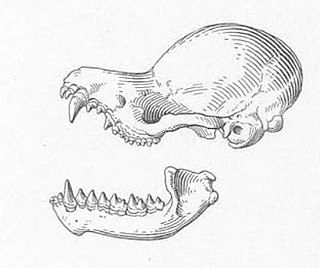
The copper woolly bat is a species of vesper bat. It is found in Cameroon, Democratic Republic of the Congo, Ivory Coast, and Guinea. Its natural habitats are subtropical or tropical dry forests, subtropical or tropical moist lowland forests, and subtropical or tropical swamps. It is threatened by habitat loss.

The tiny serotine is a species of vesper bat. It is found in Benin, Burkina Faso, Cameroon, Central African Republic, Chad, Republic of the Congo, Democratic Republic of the Congo, Ivory Coast, Ethiopia, Gambia, Ghana, Guinea, Guinea-Bissau, Nigeria, Senegal, Sudan, Togo, and Uganda. Its natural habitats are savanna and subtropical or tropical shrubland.
The white-winged serotine is a species of vesper bat.

Campbell's mona monkey, also known as Campbell's guenon and Campbell's monkey, is a species of primate in the family Cercopithecidae found in the Ivory Coast, Gambia, Ghana, Guinea, Guinea-Bissau, Liberia, Senegal, and Sierra Leone. It was named for Henry Dundas Campbell, in 1838. Lowe's mona monkey was previously considered a subspecies of Campbell's mona monkey. The International Union for Conservation of Nature has rated this species as being a near-threatened species because it has a wide range and is able to adapt to degraded habitats.

The lesser spot-nosed monkey, also known as the lesser spot-nosed guenon, lesser white-nosed guenon, or lesser white-nosed monkey, is a species of primate in the family Cercopithecidae. It is found in Ivory Coast, Ghana, Guinea, Liberia, Sierra Leone, Togo, Guinea-Bissau, and possibly Senegal.
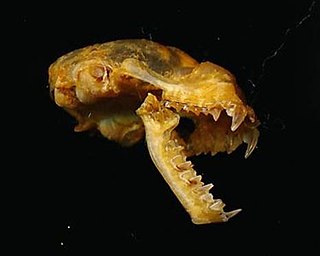
The Benito roundleaf bat is a species of bat in the family Hipposideridae found in Cameroon, Central African Republic, Republic of the Congo, Democratic Republic of the Congo, Ivory Coast, Equatorial Guinea, Gabon, Ghana, Guinea, Liberia, Nigeria, Sierra Leone, South Sudan, and Togo. Its natural habitat is subtropical or tropical moist lowland forests.
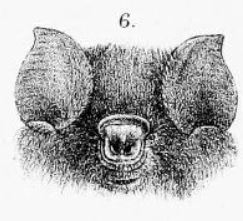
The sooty roundleaf bat is a species of bat in the family Hipposideridae. It is found in Cameroon, Democratic Republic of the Congo, Ivory Coast, Gabon, Ghana, Guinea, Liberia, Nigeria, Sierra Leone, and Uganda. Its natural habitats are subtropical or tropical moist lowland forests and moist savanna.

Jones's roundleaf bat is a species of bat in the family Hipposideridae. It is endemic to southern West Africa. Its natural habitats are subtropical or tropical dry forest, savanna, subtropical or tropical dry lowland grassland, rocky areas, and caves and other subterranean habitats.
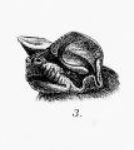
The Sierra Leone free-tailed bat is a species of bat in the family Molossidae. It is found in Cameroon, Ivory Coast, Equatorial Guinea, Gabon, Ghana, Guinea, Kenya, Liberia, Mozambique, Nigeria, Sierra Leone, Tanzania, Togo, and possibly the Central African Republic, the Republic of the Congo, and the Democratic Republic of the Congo. Its natural habitats are subtropical or tropical dry forests and subtropical or tropical moist lowland forests.

The Railer bat is a species of bat in the family Molossidae. It is found in Cameroon, Central African Republic, Republic of the Congo, Democratic Republic of the Congo, Ivory Coast, Equatorial Guinea, Gabon, Ghana, Guinea, Kenya, Liberia, Nigeria, Rwanda, Sierra Leone, and Uganda. Its natural habitats are subtropical or tropical dry forests and subtropical or tropical moist lowland forests.

Veldkamp's dwarf epauletted fruit bat is a species of bat in the family Pteropodidae. It is the only species within the genus Nanonycteris. It is found in Benin, Cameroon, Central African Republic, Ivory Coast, Ghana, Guinea, Liberia, Nigeria, Sierra Leone, and Togo. Its natural habitats are subtropical or tropical moist, mangrove and montane forests, and savanna.
The Gambian slit-faced bat is a species of bat in the family Nycteridae found in Benin, Burkina Faso, Cameroon, Ivory Coast, Gambia, Ghana, Guinea, Guinea-Bissau, Mali, Mauritania, Niger, Nigeria, Senegal, Sierra Leone, and Togo. Its natural habitats are subtropical or tropical moist lowland forest and savanna.

The halcyon horseshoe bat is a species of bat in the family Rhinolophidae. It is found in Cameroon, Republic of the Congo, Democratic Republic of the Congo, Ivory Coast, Equatorial Guinea, Ghana, Guinea, Kenya, Liberia, Nigeria, Senegal, South Sudan, Togo, Uganda, possibly Gabon, and possibly Sierra Leone. Its natural habitats are subtropical and tropical dry and moist lowland forest, moist savanna, caves, and other subterranean habitats.
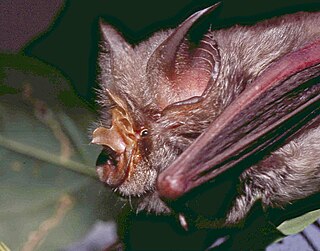
Rüppell's horseshoe bat is a species of bat in the family Rhinolophidae found in Africa. Its natural habitats are subtropical or tropical dry forests, savanna, caves and other subterranean habitats. This species is quite common in parts of its range, and no specific threats have been recognised, so the International Union for Conservation of Nature has rated its conservation status as being of "least concern".

The Hills' horseshoe bat is a species of bat in the family Rhinolophidae. It is found in Cameroon, Guinea, Liberia, and Nigeria. Its natural habitats are subtropical and tropical moist lowland and montane forest, caves and other subterranean habitats.
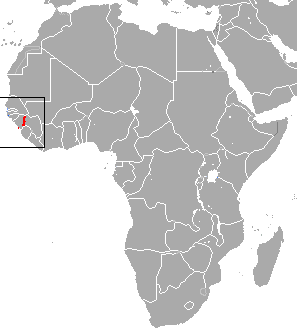
Maclaud's horseshoe bat is a species of bat in the family Rhinolophidae. It is endemic to Guinea. Its natural habitats are moist savanna, caves and other subterranean habitats. It is one of five African microbat species to be listed as endangered by the IUCN. In 2013, Bat Conservation International listed this species as one of the 35 species of its worldwide priority list of conservation. It is threatened by habitat loss.

The Bushveld horseshoe bat is a species of bat in the family Rhinolophidae. It is found in Botswana, Cameroon, Ivory Coast, Eswatini, Ethiopia, Guinea, Kenya, Liberia, Malawi, Mozambique, Nigeria, South Africa, South Sudan, Tanzania, Zambia, and Zimbabwe. Its natural habitats are moist savanna, caves and other subterranean habitats.

The Ziama horseshoe bat is a species of bat in the family Rhinolophidae. It was first described in 2002. It is found in Guinea, Sierra Leone, and Liberia. Its natural habitats are subtropical and tropical moist lowland and monstane forests. In 2013, Bat Conservation International listed this species as one of the 35 species of its worldwide priority list of conservation.


















